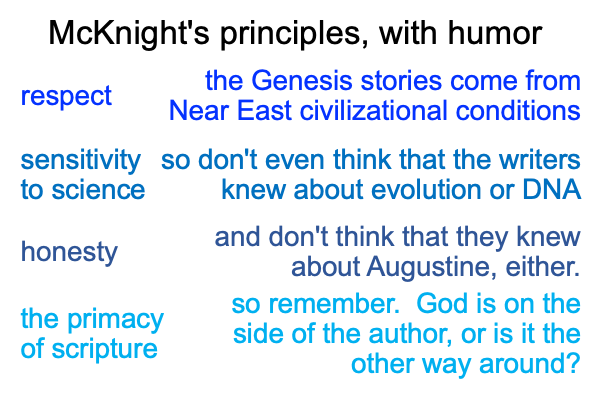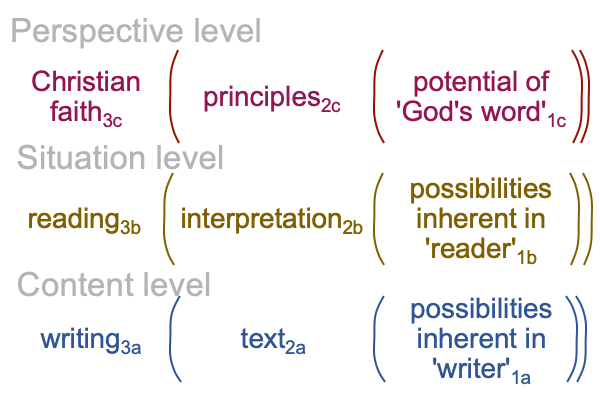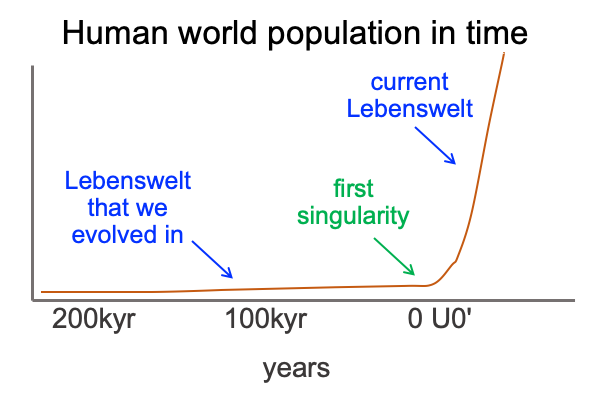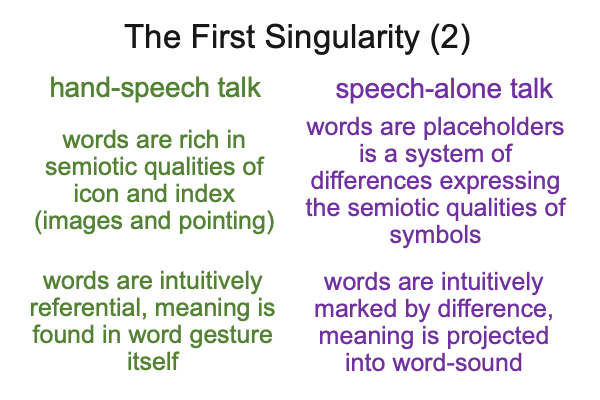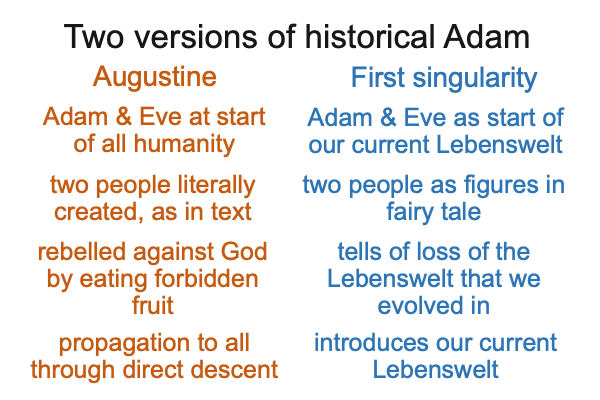0212 Here is my version of McKnight’s fifth thesis.
Humans are not like the animals. Humans can be reduced to animals.
0213 The first statement follows Genesis.
The second statement comes from gods creating humans to do their work. Likewise, humans breed stock animals (like donkeys) to do their work.
0214 During the Uruk period, a standard bevel-rimmed bowl was invented in order to give rations. The elites treated the folk like stock animals. Work for food. This standard bowl is found in Uruk-level excavations.
0215 Here is my version of McKnight’s sixth thesis.
After the creation of Adam, God makes Eve from Adam’s rib. This denotes the way humans evolved to be.
0216 In the first Genesis origin story, humans were made to fill the earth and have dominion over it. This dominion was not royal imposition. It was a dominion in sync with the created world. Plants and animals talked to humans in images and indications. Humans talked to one another in linguistic pantomime and pointing.
In the second Genesis origin story, humans fill the earth and have dominion over it. This dominion is similar to royal imposition. Humans name the plants and the animals. God’s creation becomes subject to human sovereign control.
0217 Here is my version of McKnight’s seventh thesis.
When God places Adam and Eve in the garden. The garden represents the Lebenswelt that we evolved in. Adam and Eve tended the garden. But, the garden sprouted on God’s command.
When God curses Adam with the law of diminishing returns, His curse describes our current Lebenswelt.
0218 Here is my version of McKnight’s eighth thesis.
Adam names the animals. This naming depicts speech-alone talk.
In hand-speech talk, an animal would name itself. Some feature of the animal would go into its gestural-name. This is the nature of pantomime.
0219 Here is my version of McKnight’s ninth thesis.
Adam and Eve had the freedom to choose or defy God. They had the capacity to be arrogant. With the help of the serpent, they realized that they could be “like God”.
0220 This arrogance and grasping for power characterizes the battle between the original shamans and the priests and priestesses of the specialized religions of unconstrained complexity.
0221 The original shamans carried on the holistic traditions of the Lebenswelt that we evolved in. Their hand-speech traditions engaged God, through natural signs.
In contrast, labor and social specialties (empowered by semiotic qualities of speech-alone talk) projected gods into the gaps of their knowledge. They chose gods who were arrogant, power-grabbing and ready to displace the eternal gods of the shamans.
0222 Here is my version of McKnight’s tenth thesis.
The curses laid on Adam, Eve and the serpent depict our current Lebenswelt.
0223 But, worse than any of these curses, is the reality that humans no longer intuitively talk the truth.
When words are icons and indexes, they are true because they picture or point to something. The fidelity of the word is intuitively obvious.
When words are purely symbolic, their truth depends on the entire system of differences that supports them. This allows us to unwittingly and deceptively alter the meaning, presence and message of words.
0224 An example appeared earlier. The word “rational” once meant “reasonable” and “without passion”. Now, in 2025, “rational” means “anything but religious” (where “religion” means “Christian factions”).
0225 Here is my version of McKnight’s eleventh thesis.
The stories of Adam and Eve set the stage for the emergence of civilization in southern Mesopotamia.
In contrast, the ancient (excavated) public myths account for the political and religious orders of the time.
0226 Indeed, what follows the Book of Genesis is full of irony, since the nation of Israel does precisely what Eve did,believing its own projections into spoken words.
Saint Paul put the irony in a nutshell. Once someone else (particularly God) gives a command, our clever little minds start pulling and pushing at the spoken words, hoping to get something for nothing. We do so through our ability to name. We create labels. Then, we project our own meanings into the terms. In doing so, we create our own “reality”.
And the consequences?
Later generations will suffer these.
0227 Here is my version of McKnight’s twelfth thesis.
Adam and Eve are literary and archetypal. They bear the image-of-God.
They also point, via the genealogies, to events occurring thousands of years ago, not tens of thousands. The (excavated) literature of the ancient Near East does the same. The fact that this living and these dead traditions are co-extensive (containing different versions of the same story) indicates common descent (followed by modification).
0228 All these stories derive from a single – worldview transforming – event, set in motion 7800 years ago (and proceeding, even now, with the loss of hand-speech talk in the North American Plains Indians and the Australian Aborigines). This event is called “the first singularity” and marks the transition from the Lebenswelt that we evolved into our current Lebenswelt.
0229 The historical Adam envisioned by Augustine is untenable. A historical and mythic Adam at the start of history is tenable.


